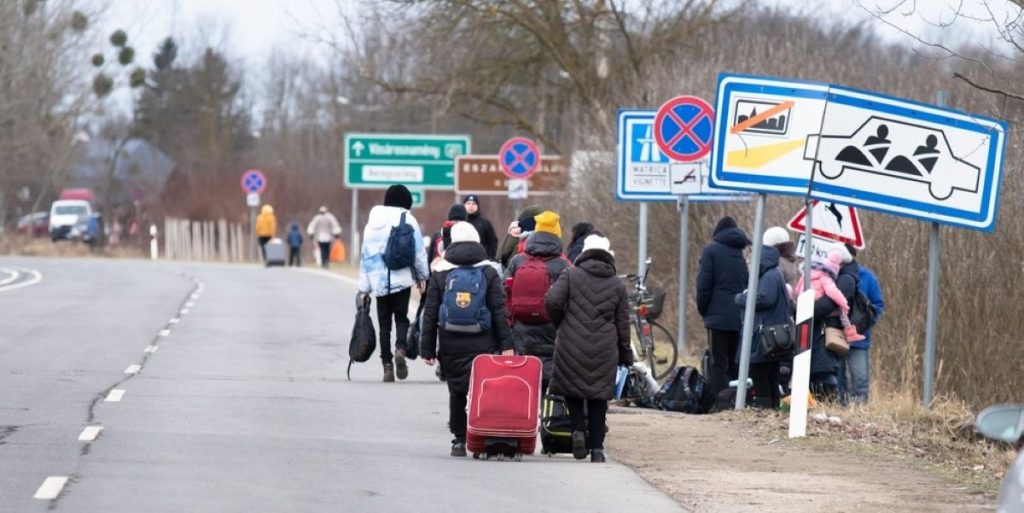Despite years of occupation and danger, many Ukrainians are still making the long journey home to areas under Russian control.
Others are reading now
On Ukraine’s northern border with Belarus, bitter winds cut across the Volyn humanitarian corridor.
The corridor to occupied Ukraine
Olena, a pensioner from the occupied Zaporozhye region, crossed into Volyn after nearly four years under Russian rule. Wrapped in her heaviest coat, she recalls the fear that never left her.
“If you only knew how we live. We are afraid of everything. There are more and more Russians in the area. God forbid you say the wrong thing to the neighbors,” she said.
Even after escaping, she insists on returning home.
“We’ve just finished the house. How can we leave it now and give everything to the Russians?”
Also read
Located in northwestern Ukraine, the Volyn corridor is the last functioning route between Ukraine and Belarus.
It is used mainly by civilians leaving occupied regions. The last direct crossing between Russia and Ukraine, in the Sumy region, closed in August 2024 as fighting intensified.
A risky escape route
Belarus served as a staging ground for Moscow’s 2022 invasion, and the territory near the Volyn crossing is now fortified with mines, anti-tank barriers, and heavy patrols.
Margarita Vershinina, spokesperson for the Volyn border guard detachment, told the Kyiv Independent that the situation remains “completely under control” but said forces “do not exclude provocations from Belarus.”
A report from the UN Refugee Agency found that 45 percent of those using the corridor do not plan to stay in Ukraine.
Also read
Of that group, 83 percent intend to return to the occupied territories, while 17 percent hope to reach the European Union.
According to the aid organization Helping to Leave, crossings through Volyn have increased ninefold since early 2025.
“People say they can’t stand it there anymore. They are pressured in every way,” said border coordinator Liubov Palivoda.
Life under occupation
“Living under Russian occupation is suicide,” said Andrii, a 20-year-old from occupied Zaporozhye.
“It’s terrible to be on the street next to Russian soldiers. You never know what’s going through their minds. They can shoot at any time.”
Also read
Rights groups report widespread abuses in Russian-held regions, including forced conscription, sexual assault, child deportations, and systematic torture.
Towns have been transformed into military zones, and shortages of food, water, and electricity are worsening.
Despite these conditions, many evacuees still choose to return. Some do so for relatives who cannot leave; others refuse to abandon homes built over a lifetime.
The pull of home
Near a Red Cross shelter at the border, a woman from the Luhansk region smokes a cigarette and waits for transport. She says she will soon return home to care for her sick mother.
“Those living under occupation are waiting for liberation, not surrendering,” explained Serhii, a coordinator with Helping to Leave.
Also read
“They want to return to their land, to grow wheat, melons, pumpkins, just like before the war.”
He said that for many, leaving permanently is unthinkable. “It’s hard to leave a place where you’ve worked your whole life, where you’ve built something of your own, only to start over somewhere else.”
The long road to safety
Traveling from occupied areas to free Ukraine can take days.
One elderly couple from Luhansk spent three days reaching their children in Kharkiv, a journey that once took only five hours.
Most travel in volunteer-run minibuses or on trains.
Also read
Passing through Russian and Belarusian checkpoints remains the most dangerous stage.
“I was afraid the Russians would stop me and find out I was going to Ukraine,” Andrii said. His first attempt failed when Russian guards told him to “think for three more months.” Refusing a Russian passport spared him from being drafted into the army.
“When I saw our flag, I felt like I was coming home,” he said. “I felt peace. No threat, no fear.”
Holding on to hope
At the border, volunteers help families unload their bags while stray dogs wander nearby. Olena smiles as she feeds them.
A woman from Luhansk speaks to her children on the phone, relieved to be safe.
Also read
Serhii helps load luggage into vans. Inside one bag he finds heavy jars of preserves.
“Why carry this all the way?” he asks. From the crowd, someone answers softly: “Because they’re made by my mother.”
For many Ukrainians, returning to occupied territory means risking their lives. But for those who have lost everything else, the idea of home remains the only thing worth holding on to.
Sources: Kyiv Independent, News.ro, Ziare.com, UNHCR
This article is made and published by Kathrine Frich, who may have used AI in the preparation


